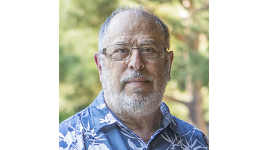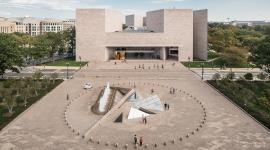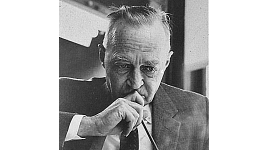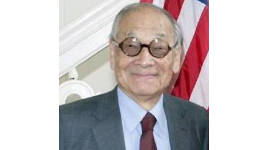Remembering Ron Herman
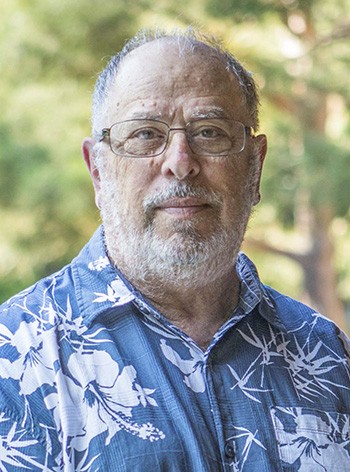
Ronald Matthew Herman (known as Ron), the only child of the late Julian and Mae Herman, was born on August 3, 1941, in Los Angeles, California. He was raised and attended high school in North Hollywood. His father was a horticulturist, nurseryman, and former president of the San Fernando Valley chapter of the California Nurserymen's Association. Herman’s formative years were spent learning about horticulture and his father’s nursery business after school and during weekends. Nursery staff also designed and constructed gardens, and Herman spent his summers building gardens for Hollywood movie stars and others from the entertainment industry. The crews with whom he worked comprised predominately Japanese-Americans who, at that time, were a staple of California’s nursery and agricultural industries. Herman was greatly influenced by his fellow Japanese-American crew members, as would become apparent as he embarked on his career. He earned a B.L.A. at the University of California, Berkeley, in 1964, studying under the influential Modernist landscape architects Garrett Eckbo, Robert Royston, and Lawrence Halprin.
Also in 1964, Herman began working at the office of Robert Herrick Carter & Associates in Culver City, California. It was there that he met the San Francisco-based landscape architect Thomas Church, whose designs, with their biomorphic forms influenced by Modernist art, helped define California’s culture of outdoor living and the synergistic relationship between house and garden. Church engaged Carter’s firm to develop construction drawings and provide logistical support for the new Los Angeles County Museum. As the firm’s junior employee, Herman accompanied Church during his visits to Los Angeles, learning all he could during their long drives and lunch conversations, and visiting local nurseries and gardens that piqued Church’s interest. These experiences left lifelong impressions, and, later in his career, Herman would renovate residential gardens that Church designed.
While many of Herman’s undergraduate classmates sought to attend Harvard or other top American universities for their graduate studies, he chose to go to the “Far East,” studying at Kyoto University from 1966 to 1968. Immersed in Japanese culture, Herman became conversant in the local dialect and literate in the language and nomenclature of traditional Japanese gardens. This experience was transformational and had a significant impact on his professional life.
After returning from Japan, Herman became a visiting lecturer in the Departments of Architecture and Landscape Architecture at U.C. Berkeley, where he taught design studios and core courses for twenty years, including a course on Japanese gardens. He later co-taught this course with noted historian Marc Treib, who became his lifelong friend. Herman made annual visits to Japan to maintain his interests and connections, and especially to keep his teaching up to date. In 1980, he and Treib co-authored the book A Guide to the Gardens of Kyoto (a revised edition with color plates will be released in 2018).
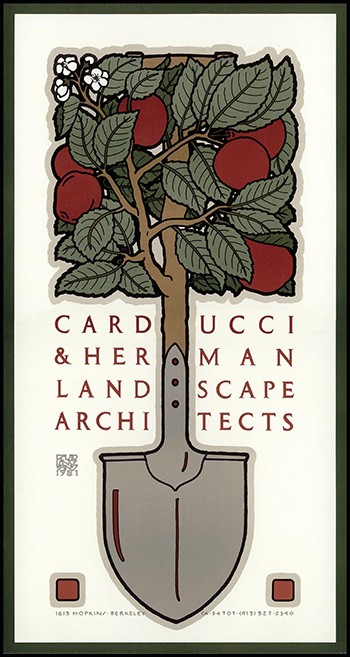
Herman designed many small residential gardens in addition to his teaching. But his career path would change in 1972, when he re-connected with former Berkeley classmate Larry Carducci, who also happened to be a former Halprin employee. The two men formed Carducci-Herman & Associates in Berkeley and rode the wave of new construction in California, completing landscapes for numerous Bank of America branches, corporate business parks, and other institutional clients. The firm landed its biggest project in 1980, a high-end residential development known as Fairbanks Ranch that covered 3,000 acres, with single-family lots ranging from three-quarters of an acre to 40 acres. The north San Diego County property takes its name from the original owner, the internationally known movie star Douglas Fairbanks. He and actress Mary Pickford, considered a Hollywood royal couple, often entertained guests at the property, which they maintained as a "second home.”
The site contained natural streams, lakes, and meadows and afforded panoramic views of the Pacific Ocean. As the principal on the Fairbanks Ranch project, Herman led the efforts to develop a master tree-planting plan (with over 60,000 trees) and individual plans for the country clubhouse and tennis courts, the commercial and retail center, and the equestrian facility. Fortuitously, Herman’s father was preparing to retire and needed to liquidate his inventory. Large specimen trees were sourced from the elder Herman's nursery and installed throughout the site. Fairbanks Ranch later hosted some of the equestrian events for the 1984 Summer Olympics.
In the late 1980s, Herman amicably parted ways with Larry Carducci, his partner of fifteen years, and returned to a small practice based in his home. But he was soon pleasantly surprised to find himself riding another California wave: the many projects that materialized in the wake of the "dot-com" boom and the new-found wealth of high-tech moguls and entrepreneurs in Silicon Valley. By the early 1990s, his practice had once more become very active: “I have these new millionaire clients half my age with huge budgets who want instant gardens,” he remarked. Even with the stress of these demands, Herman was able to express his passion for great gardens while educating an ever-larger clientele. His reputation grew quickly, as did his staff, soon numbering fifteen employees at his offices in San Leandro, California. His roster of clients included software giant and billionaire Larry Ellison (for whom Herman designed three residential gardens and Oracle’s corporate headquarters), musician Neil Young, and former San Francisco 49’ers quarterback Joe Montana, to name but a few. Herman also expanded the geographical scope of his practice, designing the National Gallery’s East Wing garden in Washington, D.C., and working with I.M. Pei, Flavin Architects, Robert A. M. Stern, and other architects on projects throughout the continental United States and Hawaii.
In his designs, Herman artfully explored various materials (vegetal, mineral, artificial) as he interpreted the contemporary garden as a refuge from the stresses of digital technology and hyper-communication. He infused his Modernist approach with principles of Japanese gardens, treating each site as its own unique design exploration. His work as a whole can be placed within the aesthetic context of the California School’s second generation of Modernist landscape architects. Although Herman was known as an expert on traditional Japanese gardens (having replicated the seventeenth-century Katsura Imperial Villa garden on Larry Ellison’s 25-acre Woodside estate), he covered a range of contemporary design expressions. His portfolio of more than 400 gardens represents his masterful attention to detail and nearly six decades of careful work with plant materials. Moreover, Herman kept up with the changes to the environment. His wealth of knowledge and experience allowed him to respond to changing climatic conditions, including California’s droughts.
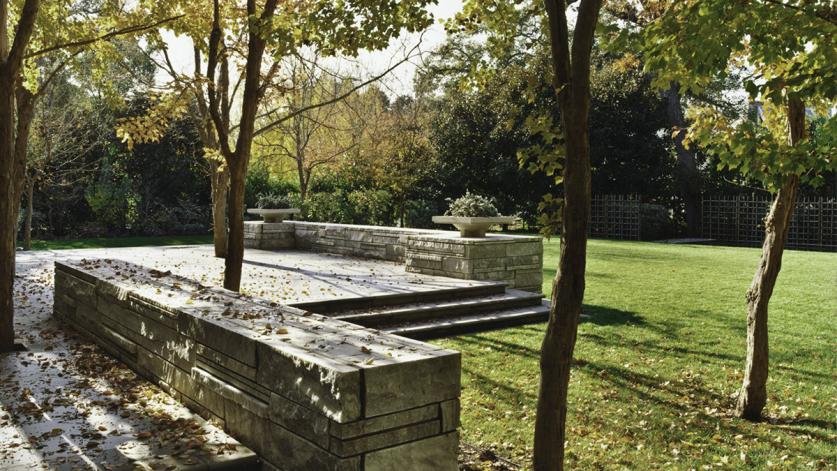
Herman was named a Fellow the American Society of Landscape Architects in 2008, and U.C. Berkeley’s College of Environmental Design recently recognized him as its 2018 Distinguished Alumnus. He received two fellowships from the Japan Foundation and frequently lectured on Japanese gardens and residential design. His projects and writing have appeared in may publications, including Process Architecture 61: Landscape Design - New Wave in California (1985); New American Garden (1998); Pocket Gardens (2000); The New Garden Paradise: The Great Private Gardens of the World (2005); The Contemporary Garden (2009); and The Gardens of Ron Herman (2012). Herman’s work was also featured in several magazines, including House & Garden, Architectural Digest, and Fortune.
When he announced the closure of his offices in January 2017, Herman included the following note: “I have had a wonderful time in a great profession. To see an idea in your mind go to realization is truly miraculous. I have had the privilege to meet some amazing clients and see some of the most beautiful sites in the world.” Ron Herman died peacefully at his home in the San Francisco Bay Area on June 28, 2018. He is survived by his wife, Jenny Herman.
References
Carter, J. (2004) “Creating Ellison’s Garden: East Meets West in the Modern Interpretation of a Global Garden”, www.landscapeonline.com
Herman, R. (1985) “The California Landscape: a brief overview” in Process Architecture, Landscape Design: New Wave in California, Vol 61 pp. 5-9, Tokyo, Japan
Herman, R. (2000) “(Re)working with Thomas Church”, Studies in the History of Gardens & Designed Landscapes, Vol 20:2 pp. 171-180
McKee, B. (2012) The Gardens of Ron Herman, James G. Trulove, Publisher, Washington D.C.
Serrells, A. (2002) “Ron Herman's garden unfolds quietly into layers of spaces”, San Francisco Chronicle, Sept. 12, 2002
Los Angeles Library Online Archive: “Valley Times Collection” HCNVT_d039_f23_i6 Nurserymen Association Officers 1950
Correspondence via e-mail from Peter Aaron (July 22, 2018); Marc Treib (July 21, 2018); David Goines (July 18, 2018); Colin Flavin (July 18, 2018); and Ron Herman (December 15, 2016).
Telephone conversation with Mark Schwartz (July 20, 2018)




